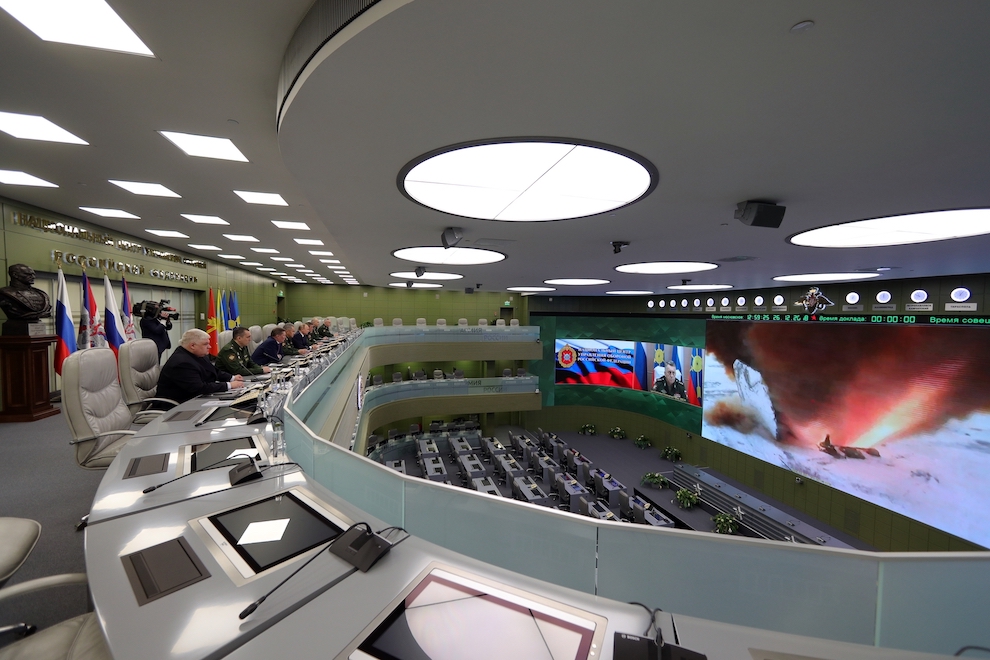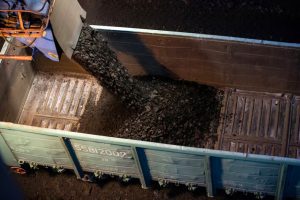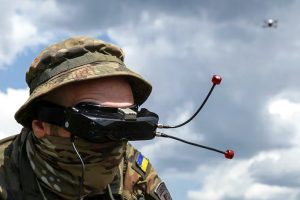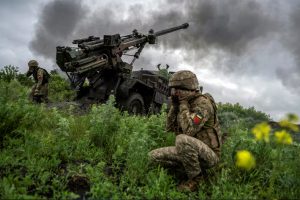The announcement was meant to put the fear of God into Ukraine and the West. A terrible new weapon that will wreak havoc on its enemies and cannot be stopped as it travels at so-called hypersonic speeds, making it almost impossible to intercept.
On Saturday, Russia’s Ministry of Defence announced the first operational use of the nation’s new Kh-47M2 Kinzhal hypersonic missile in a strike against a weapons depot in Ukraine’s western Ivano-Frankivsk region.
The next day, Russian forces struck again, with another Kinzhal missile hitting a Ukrainian fuel depot in Kostiantynivka near the Black Sea port of Mykolaiv.
According to the ministry, both were fired from Crimean airspace. Moscow claims these missiles fly at exceptionally high speeds – up to Mach 10, or 12,000 km per hour – and that combined with manoeuvrability make them extremely difficult or impossible to intercept.
Also on AF: Chinese Firms Flock to Switzerland as US Delisting Risks Loom
Should we be afraid of this terrible new weapon? The answer is no, because firstly, it is not a new weapon and, secondly it is not a true hypersonic weapon.
According to a special report in Sandboxx online, it is not quite the historic debut that Russia is claiming.
The Kh-47M2 Kinzhal hypersonic missile does travel at hypersonic speeds – in excess of Mach 5, or about 3,836 mph – but it is not one of these advanced new weapons.
The truth is, the Kinzhal hypersonic missile is actually little more than a conventional air-launched ballistic missile with a design that dates back to the 1980s.
It has benefited a great deal from both intentional and less-than-intentional misconceptions about this new class of weapons, often cited as a reason the United States is lagging behind Russia and China in a hypersonic arms race, Sandboxx reported.
Hypersonic speed isn’t actually all that special, but there are new weapons that leverage hypersonic speeds to achieve objectives in new or different ways. The Kinzhal, however, just isn’t one of them.
Today, when people talk about new hypersonic weapons, they’re usually referring to one of two kinds that are currently in development or in service with China, Russia and the US – hypersonic glide vehicles and hypersonic cruise missiles.
Hypersonic Glide Vehicles (HGVs) aren’t all that different than the warheads on traditional long-range ballistic missiles, at least in the early stages of their flight path, Sandboxx reported.
They are carried into the atmosphere via high-velocity rocket boosters just like traditional intercontinental ballistic missiles (ICBMs), though often not quite as high. The missile then deploys one or more glide vehicles that rely on momentum and their control surfaces to manage their high-speed descent.
Russia’s Hypersonic Claims
Russia does have a hypersonic boost glide-vehicle reportedly in service in their Avangard weapon system slated to be carried aboard their forthcoming nuclear ICBM, the RS-28 Sarmat.
According to EuroNews, the Avangard hypersonic glider missiles are capable of changing course and altitude at very high speeds, making them “virtually invincible” according to President Putin, who compares the scientific and military breakthrough of their development “to the creation of the first artificial satellite of the Earth,” the famous Sputnik.
Last year, Beijing tested what has been dubbed a fractional orbital bombardment system, which reportedly circled the Earth before deploying a hypersonic glide vehicle that landed in China, Defense News reported.
Hypersonic cruise missiles, on the other hand, rely on an advanced propulsion system called a scramjet, Sandboxx reported.
A scramjet, or supersonic combusting ramjet, is a variation on longstanding ramjet technology, but allows combustion to take place while air flows through the engine at supersonic speeds.
Because scramjets are really only efficient at these high speeds, these missiles are often deployed from fast-moving aircraft or rely on a different form of propulsion in the first part of their flight path, like a rocket.
Russia’s Stagnating Economy
In practice, these platforms are far more difficult and expensive to build than traditional cruise missiles, however, to date no nation has successfully fielded a scramjet-powered weapon, Sandboxx reported.
So why the big boast by the Russian military? Russia’s defence budget tends to hover at around US$60 billion per year, which places them on fairly equal footing with nations like the UK, despite maintaining a significantly larger force than that of its peers. As a result, Russia has been forced to make hard decisions.
The nation’s stagnating economy, already struggling under international sanctions, has severely limited Russia’s ability to modernise its military force.
But Russia has continued to fund the development of new weapons and systems aimed at garnering a great deal of attention, rather than focusing on maintaining or improving its existing equipment.
Russia just can’t afford to mass-produce advanced aircraft like the Su-57 stealth fighter or tanks like the T-14 Armata without foreign interests footing the bill, Sandboxx reported.
And in order to attract those foreign buyers, Russia must present the image of a nation capable of developing weapons that are on par or even superior to that of the US and China.
- By Dave Makichuk
Read more:
China Outpaces US Tenfold on Hypersonic Missiles: US General
UAE’s China Jets Purchase Shows US Relations in ‘Crisis’
























